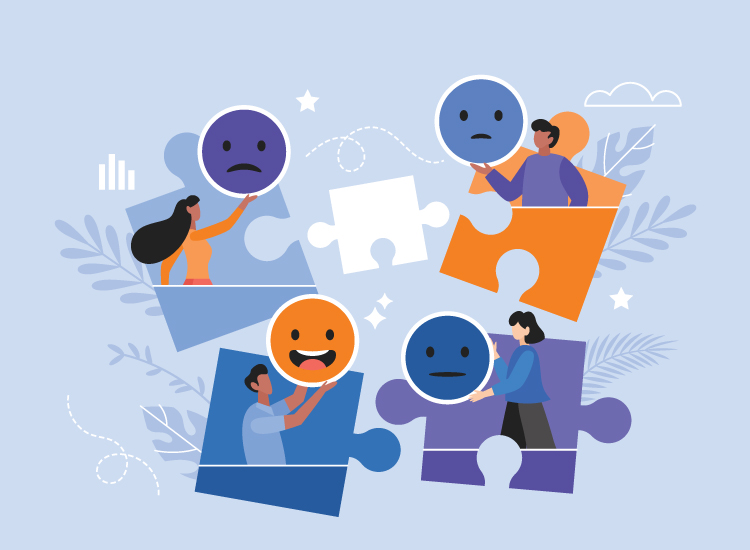Employee retention is top of mind for many industries these days, but it’s especially important for organizations in the financial and professional services industry.
According to LinkedIn, professional services – including the nation’s largest accounting firms – have a turnover rate of 13.4%, the highest of any industry. In comparison, the national average turnover rate across all industries is just 3.5%.
Three of the top reasons people leave organizations include:
- Poor management
- A lack of opportunity
- Burnout
Implementing efficient employee management software can help your organization stay on top of these three challenges impacting employee engagement.
What Is Employee Management Software?
Employee management software – also called workforce management software or HR management software – describes a system that’s used to streamline key functions within the human resources space and increase workplace productivity.
Core HR and management functions that might be automated or streamlined by employee management software include:
- Timecard management
- Resource allocation
- Billable hours reporting
- Business analytics
- Project management
- Workplace collaboration
- Profitability forecasting
- And more
Because employee management software increases transparency, creates standardized processes, and simplifies team communication, it can solve a wide range of challenges that lead to burnout and “quiet quitting.” Employees who feel valued, balanced, and organized are more likely to engage with their organizations and feel fulfilled at work.
Here are some of the ways employee management software can help with employee retention.
Retention Benefits of Employee Management Software
Better Work-Life Balance
Burnout is the number one reason U.S. employees quit their jobs. Couple that with the fact that nearly 90% of employees have experienced burnout within the past year, and it doesn’t paint a great picture for retention.
Employee management software can create a culture that encourages work-life balance by helping to automate an employer’s business practices and supplementing the actions of a Supervisor through:
- Automatically notifying employees when they are eligible for a rest period or meal period
- Sending reminder alerts to team members to log off on time
- Ensuring tasks are equitably distributed through better task management so no team members have to work late
- Providing calendar tools for both professional and personal appointments to stay better organized
Resources like coAmplifi’s analytics features also enable organizations and individual team members to view their work-life balance as a percentage based on the time they’ve logged working. Full-time employees should aim to spend about 21.8% of their year working.
Increased Employee Engagement
With powerful task-tracking and project management tools, employee management software helps team members:
- Increase their productivity
- Take more accountability and ownership of their work
- Stay better organized with deadlines and responsibilities
- Experience better communication and collaboration
Since employee engagement is currently at its lowest level since 2015, providing team members with tools that help clarify expectations and share knowledge can make a difference in retention.
Strengthened Sense of Purpose & Satisfaction
To feel like they can excel in their job, team members need to feel appreciated and like they’re being set up for success. This means giving them the tools and opportunities they need to succeed and grow.
Employees who feel like their skills are not being utilized at their job are 10 times more likely to be job hunting elsewhere. An employee management system can help by:
- Connecting the dots between individual tasks and the company’s overall goals
- Showing team members how their work contributes to team projects and successes
- Enabling employees to visually see the progress they’ve made on each assignment
- Providing clarity around the responsibilities and deadlines associated with their role
- Limiting work to tasks relevant to their job description
- Ensuring employees’ voices are heard
Through advanced task tracking, micromanagement also falls to the sideline, as managers and leadership can clearly see where each project stands and the progress being made.
Culture of Learning, Support, & Recognition
Employee management software provides managers with more information on their team members’ workload and progress. This enables leadership to better understand each employee’s interests, growth trajectory, and learning opportunities.
Organizations that have a more learning-focused culture achieve up to 50% higher retention and engagement rates. Employee management software creates this culture of growth by enabling:
- Regular feedback on tasks
- Real-time recognition of major milestones
- Consistent, clear communication
- Custom, data-driven decisions for employee development
Because managers are often juggling multiple responsibilities, it can be easy to overlook employee accomplishments and chances to recognize good work in action. Employee engagement software helps to showcase team members’ hard work, which can yield:
- Quick recognition of major achievements
- Feelings of appreciation and value
- Boosted motivation levels
- A more enthusiastic, positive, and enjoyable work environment
Keep Your Highest Performers Around With Employee Management Software
Employee management software like that offered by coAmplifi promotes team alignment, increases employee fulfillment, and provides positive reinforcement for a job well done. Don’t lose your best team members. Schedule your demo now!




